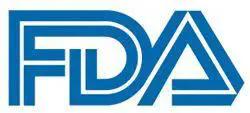News
Article
OncLive’s May Roundup of Key FDA Approvals in Oncology
Author(s):
Key Takeaways
- Liso-cel received approval for relapsed/refractory follicular lymphoma and mantle cell lymphoma.
- Tarlatamab was approved for extensive-stage small cell lung cancer, demonstrating significant ORR and DOR benefit in the DELLphi-301 study.
Here is your guide to important regulatory approvals made by the FDA in May 2024.
FDA

In case you missed it, here is your snapshot of important regulatory approvals made by the FDA in May 2024, including the findings that supported the decisions and expert insights on the clinical implications of these pipeline updates.
Liso-Cel Wins Accelerated Approval for Relapsed/Refractory Follicular Lymphoma
The CAR T-cell therapy lisocabtagene maraleucel (liso-cel; Breyanzi) was awarded accelerated approval from the FDA on May 15, 2024, for use in adult patients with relapsed or refractory follicular lymphoma who have previously received at least 2 lines of systemic therapy.
The decision is based on findings from the phase 2 TRANSCEND-FL trial (NCT04245839) in which liso-cel induced an overall response rate (ORR) of 95.7% (95% CI, 89.5%-98.8%) in evaluable patients (n = 98). The median duration of response (DOR) was not yet reached (NR; 95% CI, 18.04-NR) at a median follow-up of 16.8 months (95% CI, 16.3-17.0).
Saurabh Dahiya, MD, FACP

“This approval of liso-cel marks the third cell therapy approval for patients with relapsed or refractory follicular lymphoma,” Saurabh Dahiya, MD, FACP, associate professor of medicine (blood and marrow transplantation and cellular therapy) at Stanford University School of Medicine and clinical director of cancer cell therapy in the Stanford BMT and Cell Therapy division, told OncLive® in a recent interview. “Liso-cel is an autologous CD19-directed CAR T-cell therapy [with a] 1:1 [ratio] of CD8-positive and CD4-positive CAR T cells. [It has] shown deep and durable responses in patients with relapsed/refractory large B-cell lymphoma. Now, with this approval, it adds to the therapeutic options available for patients with relapsed or refractory follicular lymphoma.”
Tarlatamab Snags Accelerated Approval for ES-SCLC
A day later, on May 16, 2024, the regulatory agency gave the green light to tarlatamab-dlle (Imdelltra) for the treatment of patients with extensive-stage small cell lung cancer (ES-SCLC) with disease progression on or following platinum-based chemotherapy.
The approval was supported by findings from the phase 2 DELLphi-301 study (NCT05060016) in which the bispecific T-cell engager (BiTE) elicited an ORR of 40% (95% CI, 31%-51%) in evaluable patients (n = 99), which is comprised of a complete response (CR) rate of 2% and a partial response (PR) rate of 38%. The median DOR was 9.7 months (range, 2.7-20.7+). Sixty-eight percent of patients experienced a DOR that lasted for at least 6 months and 40% had a DOR that lasted for at least 12 months.
Moreover, in patients with available data on platinum sensitivity (n = 69), tarlatamab induced ORRs of 52% (95% CI, 32%-71) and 31% (95% CI, 18%-47%) in those with platinum-resistant and -sensitive disease, respectively.
Luis Paz-Ares, MD, PhD

“Tarlatamab is a BiTE that binds to DLL3 on the small cell lung cancer cell and to the CD3 receptor on the T cell. In turn, it activates the T cells to produce the cancer cell lysis,” Luis Paz-Ares, MD, PhD, chair of the medical oncology department at the Hospital Doce de Octubre, associate professor at the Universidad Complutense, and head of the lung cancer unit at the CNIO in Madrid, Spain, said in a presentation on earlier data from the trial that were shared during the 2023 ESMO Congress.
Selpercatinib Approval Expanded to Pediatric RET+ Metastatic Thyroid Cancer or Solid Tumors
On May 29, 2024, the FDA granted accelerated approval to selpercatinib (Retevmo) to pediatric patients aged 2 years or older who have:
- Advanced or metastatic medullary thyroid cancer and a RET mutation who require systemic therapy
- Advanced or metastatic thyroid cancer with a RET gene fusion who require systemic therapy and who are radioactive iodine refractory, if radioactive iodine is appropriate
- Locally advanced or metastatic solid tumors with a RET gene fusion that have progressed on or after previous systemic treatment or who have no satisfactory alternative options
The safety and efficacy of the agent was evaluated in the phase 1/2 LIBRETTO-121 study (NCT03899792). In pediatric and young adults, selpercatinib induced an ORR of 48% (95% CI, 28%-69%) by blinded independent review committee and RECIST 1.1 criteria and a median DOR that was not reached (NR; 95% CI, not evaluable [NE]-NE).
In the 14 patients with RET-mutated medullary thyroid cancer, the ORR with the agent was 43% (95% CI, 18%-71%), which included a CR rate of 7% and a PR rate of 36%. The median DOR in this subset was NE (95% CI, NE-NE); 100% and 67% of responders continued to respond for at least 12 months or 18 months, respectively. In the 10 patients with RET fusion–positive thyroid cancer, the ORR was 60% (95% CI, 26%-88%), which was comprised of a 30% CR rate and a 30% PR rate. The median DOR was also NR (95% CI, NE-NE) with responses lasting for at least 12 months for 83% of patients and at least 18 months for 50% of patients.
Selpercatinib is also being compared with cabozantinib (Cabometyx) and vandetanib (Caprelsa) in patients with advanced, multikinase inhibitor-naive, RET-mutant medullary thyroid cancer as part of the phase 3 LIBRETTO-531 trial (NCT04211337). Interim data shared at the 2023 ESMO Congress showed that selpercatinib significantly improved progression-free survival (HR, 0.280) and ORR (OR, 3.7; P < .0001) vs the other multikinase inhibitors.
Liso-Cel Indication Expands to Include Relapsed/Refractory MCL After 2 Lines of Therapy
Most recently, on May 30, 2024, the regulatory agency expanded the approval of liso-cel to include adult patients with relapsed or refractory mantle cell lymphoma who have previously received 2 or more lines of systemic therapy, including a BTK inhibitor. The decision was supported by the MCL cohort of the phase 1 TRANSCEND NHL 001 trial (NCT02631044).
Findings showed that in this population (n = 68), the CAR T-cell therapy elicited an ORR of 85.3% (95% CI, 74.6%-92.7%), which included a CR rate of 67.6% (95% CI, 55.2%-78.5%) and a PR rate of 17.6% (95% CI, 9.5%-28.8%). At a median follow-up of 22.2 months (95% CI, 16.7-22.8), the median DOR was 13.3 months (95% CI, 6.0-23.3); the 12- and 18-month DOR rates were 51.4% (95% CI, 37.5%-63.7%) and 38.8% (95% CI, 25.0%-52.4%), respectively. If best response was CR, the median DOR was 17.5 months (95% CI, 7.5-NR); the 12- and 18-month DOR rates were 57.8% (95% CI, 41.9%-70.7%) and 48.0% (95% CI, 31.6%-62.6%), respectively. If best response was a PR, the median DOR was 2.2 months (95% CI, 1.8-13.3); the respective 12- and 18-month DOR rates were 27.3% (95% CI, 6.5%-53.9%) and 0% (95% CI, NE-NE).
Leo I. Gordon, MD,

“The TRANSCEND study continued to have accrual of patients with MCL…and we have just completed the study for [that population.] Investigators around the country contributed to [this research,]” Leo I. Gordon, MD, Abby and John Friend Professor of Oncology Research, professor of medicine (hematology and oncology) at Feinberg School of Medicine at Robert H. Lurie Cancer Center, told OncLive in a recent interview. “That has led to the approval of liso-cel for MCL, and what this does is opens up the field with a product that maybe has a little bit less toxicity than the existing product [on the market] and offers more of an option for physicians, investigators, and patients to look at liso-cel in MCL that has relapsed after 2 lines of treatment or after they have already received a BTK inhibitor.”
Screening Tests Get the Green Light
On May 7, 2024, the FDA approved ColoSense, a noninvasive, multitarget stool RNA screening test for use in adults at least 45 years of age who are at average risk of developing colorectal cancer (CRC). The decision was based on findings from the phase 3 CRC-PREVENT trial (NCT04739722) in which the test was found to have 93% sensitivity for identifying CRC; it detected all stage I cases. Moreover, the test was able to detect 45% of advanced adenomas. In those between the ages of 45 and 49 years, the respective sensitivity rates for CRC and advanced adenomas were 100% and 44%.
Anjee Davis

“We hope that introducing new FDA-approved diagnostic tools, including stool-based tests like ColoSense, will help to advance access and increase screening rates, ultimately reducing the impact of late-stage colorectal cancer diagnoses,” Anjee Davis, president of Fight CRC, stated in a news release.
On May 15, 2024, the regulatory agency approved one of the first human papillomavirus (HPV) self-collection solutions for use in the United States, which can be leveraged to identify women at risk for developing cervical cancer.
“With vaccinations, innovative diagnostic tools, and screening programs, achieving the World Health Organization’s goal of eliminating cervical cancer by 2030 is within reach,” Matt Sause, chief executive officer of Roche Diagnostics, stated in a news release. “Our HPV self-collection solution helps support this goal by reducing barriers and providing access to HPV screening by allowing people to privately collect their own sample for HPV testing.”
Want breaking news updates sent straight to your inbox? Sign up to receive our e-newsletters.








